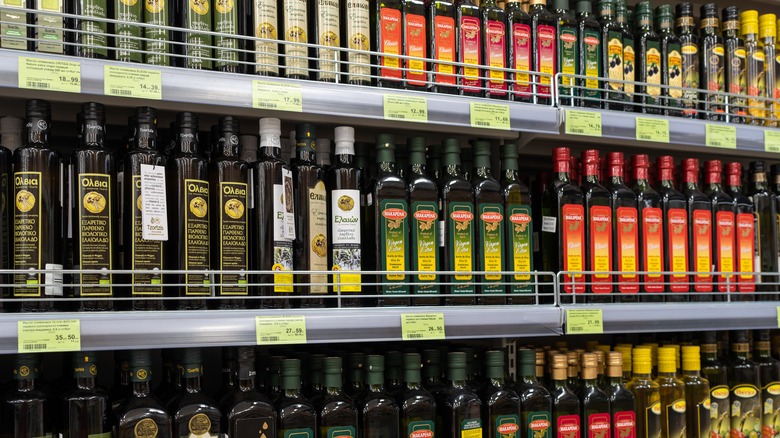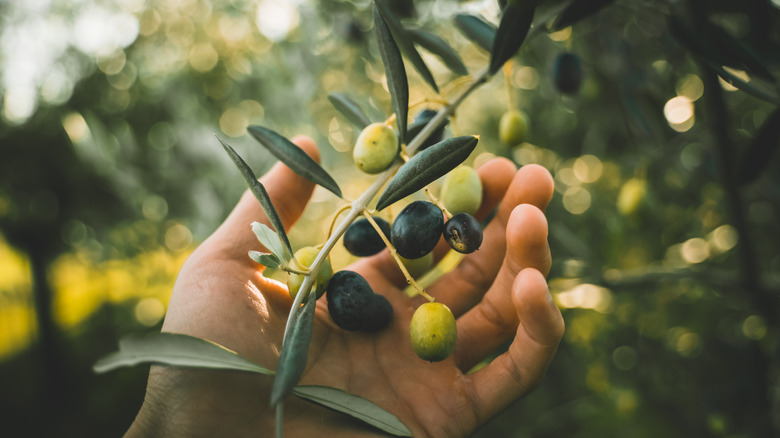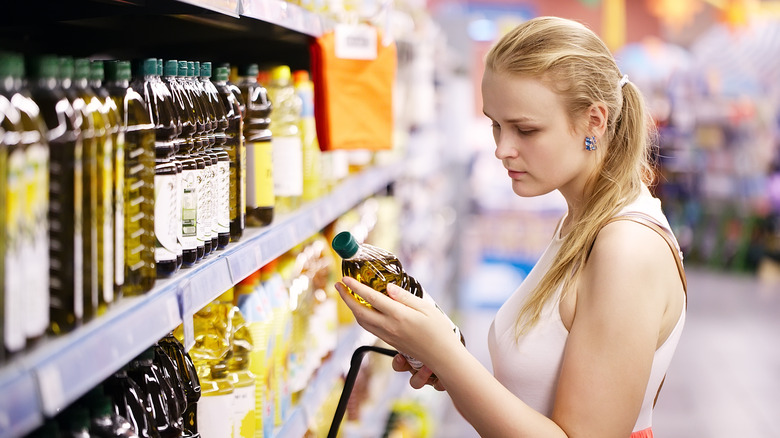How To Properly Read Olive Oil Labels So You Buy The Freshest Bottle
Unlike their salad dressing partner vinegar, olive oil does not sit happily in your pantry indefinitely. When it comes to the greenish-gold liquid, fresher is better. Olive oil begins to degrade as soon as the bottle is opened, per Brightland. Once it starts to go rancid, it will impart a less-than-desirable flavor to your dishes.
Deciphering the olive oil labels in a grocery aisle is on par with navigating a wine store these days. Just when you thought you had it all figured out and knew the difference between refined and unrefined, expeller- and cold-pressed, and virgin vs. extra-virgin, an arguably more important label to look out for is the one that will indicate how long that bottle is going to last on your shelves.
If you've ever examined the label on a bottle of olive oil, you've probably noticed a few different dates. What do they all mean and what's the best way to tell just how fresh that bottle is?
This is what the harvest date is
The harvest date listed on the label is exactly as it sounds — the date the olives were picked off the trees and crushed, or harvested. According to the California Olive Oil Council, extra-virgin olive oil is best consumed within a year and a half to two years post-harvest.
Cobram Estate USA points out that listing the harvest date is not regulated or mandatory so many manufacturers choose not to add it to their bottle labels. They often blend newer batches with older ones, and sometimes the oils may sit up to two years in the vat before bottling, per Olive Oil Times.
A reputable, high-quality brand will be proud of its production methods and choose to put the harvest date front and center on the bottle. So keep that in mind if you're needing to grab a magnifying glass to search all the fine print on the back ... if you can even find it at all (via Food & Wine).
The use-by date is less straightforward
The use-by or best-by date, on the other hand, isn't so cut and dried. It's entirely up to the discretion of the producer. Also, since it's unregulated in the United States (though required in Europe, per The Olive Oil Source), the manufacturer can put any date they want as long as it seems feasible. Most list a range of a year to four years out.
Does It Go Bad? suggests first searching for the harvest date. If you can't locate that, look for the date the oil was bottled. Both should clue you in to a solid two years of the olive oil retaining its integrity if it's stored in a cool, dark, dry place. Once opened, that lifespan is shortened to about 90 days, per OliveOil.com. If you can't find either, the last resort is to use the best-by date — but keep in mind what you now know about its meaning ... or lack thereof.


